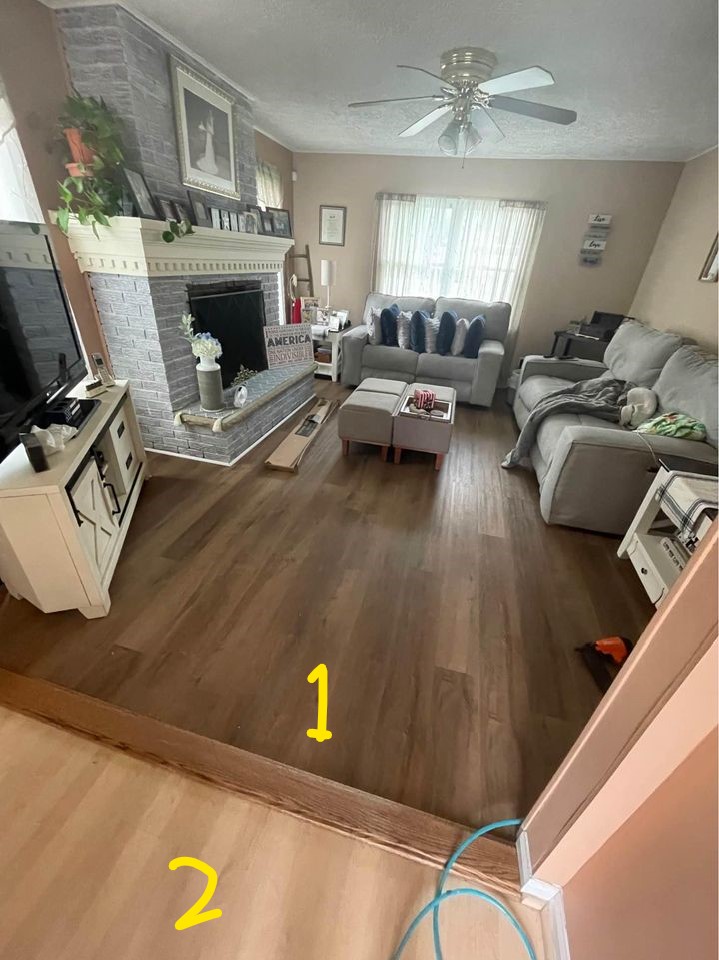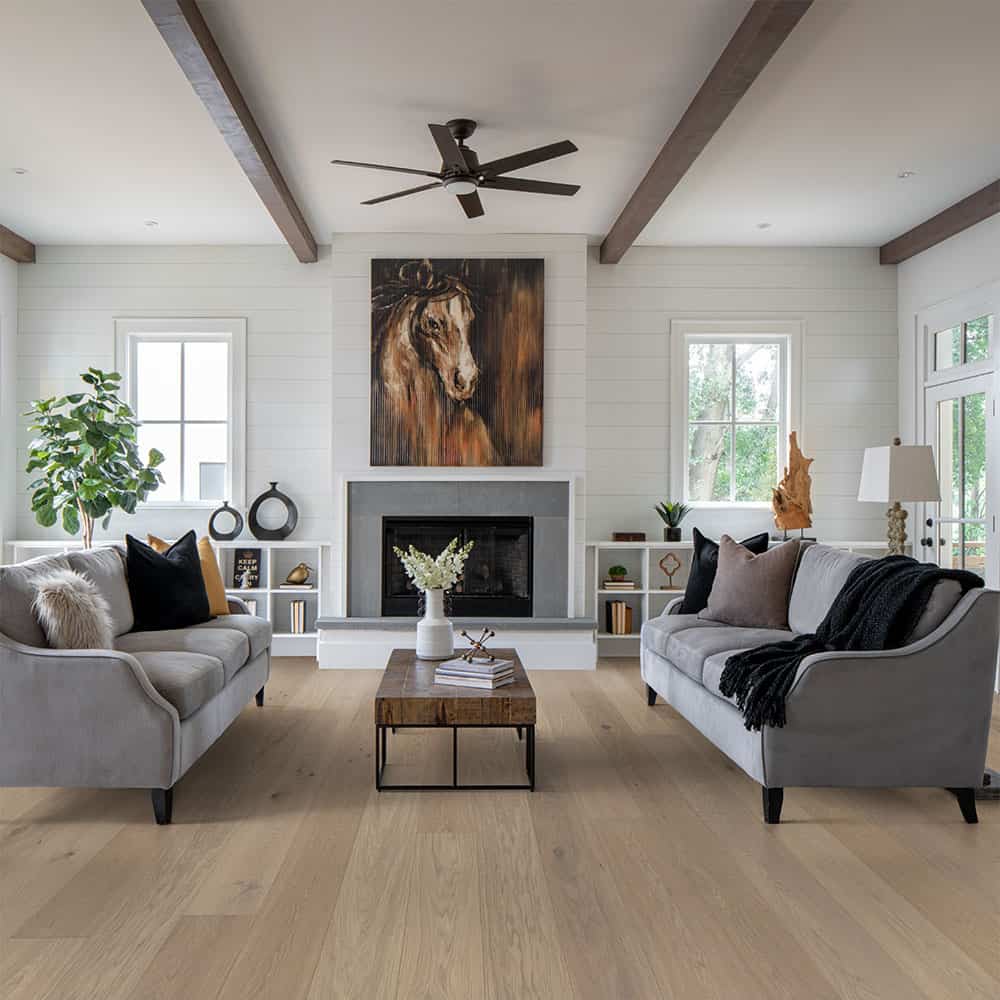Imagine this: you’re finally moving into your dream home, a beautiful space with character and potential. You’re excited to start decorating, but then you notice it—the floors. Each room seems to have its own unique wood floor, some dark and worn, others light and glossy. Suddenly, your dream home feels less unified, a collection of rooms with distinct personalities rather than a cohesive whole.

Image: mromavolley.com
So, do wood floors have to match room to room? The short answer is, no, they absolutely don’t have to. But, there are reasons why you might choose to, and why you might not. This article dives into the world of wood flooring and explores the benefits and drawbacks of matching and mismatching your wood floors, leaving you equipped to make the best choice for your home.
The Classic Appeal of Matching Wood Floors
The traditional approach to wood flooring often favors a consistent look throughout the house. There’s a certain elegant simplicity in walking from room to room and seeing the same beautiful wood beneath your feet. The consistency creates a sense of flow, visually connecting the spaces. It’s like a continuous tapestry woven from the same beautiful fabric, unifying your entire home.
Matching wood floors can amplify your home’s grandeur. Imagine large rooms with expansive hardwood floors, uninterrupted by the jarring transition of a different wood species or color. In this case, matching floors allow the space to feel larger and more cohesive. This can be especially beneficial in open-plan living spaces where the flow from one area to the next creates a harmonious whole.
When Mismatched Floors Add Character and Distinction
But, let’s not underestimate the charm of mismatched wood floors. A home with different floors can tell a story, reveal the history of the house, or simply reflect a desire for diversity. It adds visual interest and can create a sense of unique personality for each room. Imagine a bright and airy kitchen with whitewashed oak flooring flowing into a cozy living room with rich, dark walnut floors. It’s a perfect example of how mismatched floors can be used to visually distinguish different areas of your home, creating beautiful contrast.
This approach can be especially appealing for older homes where floors have been replaced over time with different styles or colors. There’s a certain rustic charm in these mismatched floors, an authentic expression of a home’s life and personality.
Considering Practicality: The Pros and Cons
Beyond aesthetic preferences, practical considerations also play a role in the decision of matching or mismatching floors.
Matching Floors:
- Ease of Installation: Installing all floors with the same wood type and finish simplifies the process. It’s easier to find matching planks, reduces the need for color adjustments, and simplifies the installation process overall.
- Simplified Maintenance: With a single flooring type, cleaning and maintenance become more straightforward as you’ll only need one type of cleaning product and maintenance routine.
- Less Costly: Purchasing a single type of flooring often comes with discounts, making it a less expensive option compared to purchasing multiple different types.
Mismatched Floors:
- Uniqueness and Character: The biggest advantage of mismatched floors is their ability to create a distinct space with individual personality for each room.
- Highlighting Architectural Features: Different flooring types can be used to accentuate unique architectural features, such as a fireplace or a bay window.
- Variety and Visual Appeal: Mismatched floors are perfect for injecting energy and visual interest into your home, creating a dynamic visual experience.

Image: mromavolley.com
Embracing a Balance: A Hybrid Approach to Functionality and Style
There’s no single right answer to the question of matching or mismatching your floors. In many cases, a hybrid approach can be the perfect solution. You can create a feeling of cohesiveness by choosing similar wood species across different areas of your home, but using different colors, stains, or finishes to create a sense of visual interest and uniqueness. This approach allows you to have the best of both worlds—a sense of unified flow with a touch of individual character for each space.
For instance, consider using the same species of wood but a lighter finish for the kitchen and hallway, then transition to a darker, richer finish for the living room or dining room. Or, you could choose a lighter wood throughout with a varying grain pattern or distressing technique to add visual variety without straying too far from the harmonious look of matching floors.
Professional Guidance for a Successful Floor Transformation
When considering the big decision of matching or mismatching your wood floors, it’s always a good idea to consult with a professional flooring specialist. They can offer invaluable advice based on your home’s structure, your intended style, and your specific needs. They can help you choose the right wood types and finishes, advise on specific installation techniques, and ensure that your floors are installed correctly and professionally.
Do Wood Floors Have To Match Room To Room
Ready to Make Your Flooring Dreams a Reality?
Ultimately, the choice of matching or mismatching your wood floors comes down to personal preference and your desired aesthetic. Whether you crave the classic look of a cohesive space or want to embrace the charm of individuality in each room, there are countless options available to achieve your vision. Take the time to explore different possibilities, consider the pros and cons of each choice, and let your creativity guide you as you transform your home into a beautiful and unique expression of your style.





